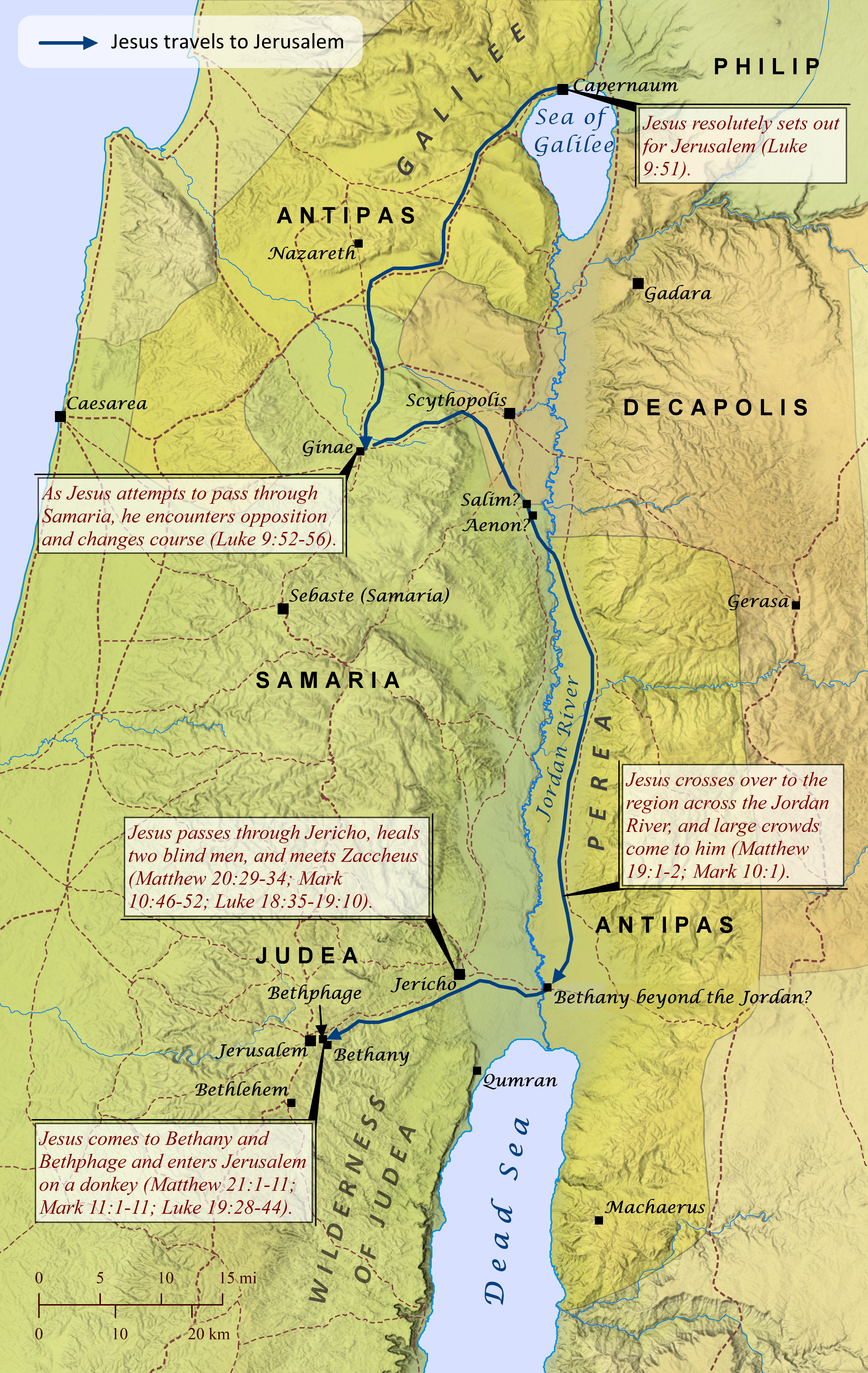Note: This view shows ‘verses’ which are not natural language units and hence sometimes only part of a sentence will be visible—click on any Bible version abbreviation down the left-hand side to see the verse in more of its context. Normally the OET discourages the reading of individual ‘verses’, but this view is only designed as a tool for doing comparisons of different translations—the older translations are further down the page (so you can read up from the bottom to trace the English translation history). The OET segments on this page are still very early looks into the unfinished texts of the Open English Translation of the Bible—please double-check these texts in advance before using in public.
AICNT And he hurried and came down and received him joyfully.
OEB So Zacchaeus got down quickly, and joyfully welcomed him.
2DT Hurrying, he descended and welcomed him, rejoicing.
WEBBE He hurried, came down, and received him joyfully.
WMBB (Same as above)
NET So he came down quickly and welcomed Jesus joyfully.
LSV and he having hurried came down, and received Him rejoicing;
FBV Zacchaeus climbed down quickly and was so happy to welcome Jesus to his home.
TCNT So he hurried down and received Jesus with joy.
T4T So he came down quickly. He took Jesus to his house and welcomed him joyfully.
LEB And he came down quickly and welcomed him joyfully.
BBE And he came down quickly, and took him into his house with joy.
Moff He came down at once and welcomed him gladly.
Wymth So he came down in haste, and welcomed Him joyfully.
ASV And he made haste, and came down, and received him joyfully.
DRA And he made haste and came down; and received him with joy.
YLT and he having hastened did come down, and did receive him rejoicing;
Drby And he made haste and came down, and received him with joy.
RV And he made haste, and came down, and received him joyfully.
SLT And having hasted, he came down, and received him rejoicing.
Wbstr And he made haste, and came down, and received him joyfully.
KJB-1769 And he made haste, and came down, and received him joyfully.
KJB-1611 And he made haste, and came downe, and receiued him ioyfully.
(Modernised spelling is same as from KJB-1769 above)
Bshps And he came downe hastyly, and receaued hym ioyfully.
(And he came down hastily, and received him joyfully.)
Gnva Then he came downe hastily, and receiued him ioyfully.
(Then he came down hastily, and received him joyfully. )
Cvdl And he came downe hastely, and receaued him with ioye.
(And he came down hastily, and received him with joy.)
TNT And he came doune hastelye and receaved him ioyfully.
(And he came down hastilye and received him joyfully. )
Wycl And he hiyynge cam doun, and ioiynge resseyuede hym.
(And he hiying came down, and joying/rejoicinge received him.)
Luth Und er stieg eilend hernieder und nahm ihn auf mit Freuden.
(And he rose rushing down and took him/it on/in/to with pleasures/delights.)
ClVg Et festinans descendit, et excepit illum gaudens.
(And festinans came_down, and excepit him gaudens. )
UGNT καὶ σπεύσας, κατέβη καὶ ὑπεδέξατο αὐτὸν χαίρων.
(kai speusas, katebaʸ kai hupedexato auton ⱪairōn.)
SBL-GNT καὶ σπεύσας κατέβη, καὶ ὑπεδέξατο αὐτὸν χαίρων.
(kai speusas katebaʸ, kai hupedexato auton ⱪairōn.)
RP-GNT Καὶ σπεύσας κατέβη, καὶ ὑπεδέξατο αὐτὸν χαίρων.
(Kai speusas katebaʸ, kai hupedexato auton ⱪairōn.)
TC-GNT Καὶ σπεύσας κατέβη, καὶ ὑπεδέξατο αὐτὸν χαίρων.
(Kai speusas katebaʸ, kai hupedexato auton ⱪairōn. )
Key for above GNTs: yellow:punctuation differs (from our SR-GNT base).
BMM BibleMapper.com Maps:

Jesus’ Final Journey to Jerusalem
Much like the difficulties of discerning the Israelites’ journey to the Promised Land (see here), the task of reconciling the four Gospel accounts of Jesus’ final journey to Jerusalem into one coherent itinerary has proven very challenging for Bible scholars. As with many other events during Jesus’ ministry, the accounts of Matthew, Mark, and Luke (often referred to as the Synoptic Gospels) present a noticeably similar account of Jesus’ final travels, while John’s Gospel presents an itinerary that is markedly different from the others. In general, the Synoptic Gospels present Jesus as making a single journey to Jerusalem, beginning in Capernaum (Luke 9:51), passing through Perea (Matthew 19:1-2; Mark 10:1) and Jericho (Matthew 20:29-34; Mark 10:46-52; Luke 18:35-19:10), and ending at Bethany and Bethphage, where he enters Jerusalem riding on a donkey (Matthew 21:1-11; Mark 11:1-11; Luke 19:28-44). John, on the other hand, mentions several trips to Jerusalem by Jesus (John 2:13-17; 5:1-15; 7:1-13; 10:22-23), followed by a trip to Perea across the Jordan River (John 10:40-42), a return to Bethany where he raises Lazarus from the dead (John 11), a withdrawal to the village of Ephraim for a few months (John 11:54), and a return trip to Bethany, where he then enters Jerusalem riding on a donkey (John 12:1-19). The differences between the Synoptics’ and John’s accounts are noteworthy, but they are not irreconcilable. The Synoptics, after noting that Jesus began his trip at Capernaum, likely condensed their accounts (as occurs elsewhere in the Gospels) to omit Jesus’ initial arrival in Jerusalem and appearance at the Festival of Dedication, thus picking up with Jesus in Perea (stage 2 of John’s itinerary). Then all the Gospels recount Jesus’ trip (back) to Bethany and Jerusalem, passing through Jericho along the way. Likewise, the Synoptics must have simply omitted the few months Jesus spent in Ephraim to escape the Jewish leaders (stage 4 of John’s itinerary) and rejoined John’s account where Jesus is preparing to enter Jerusalem on a donkey.
